In Photos: Devastating Wildfires in California
Engulfing an RV park
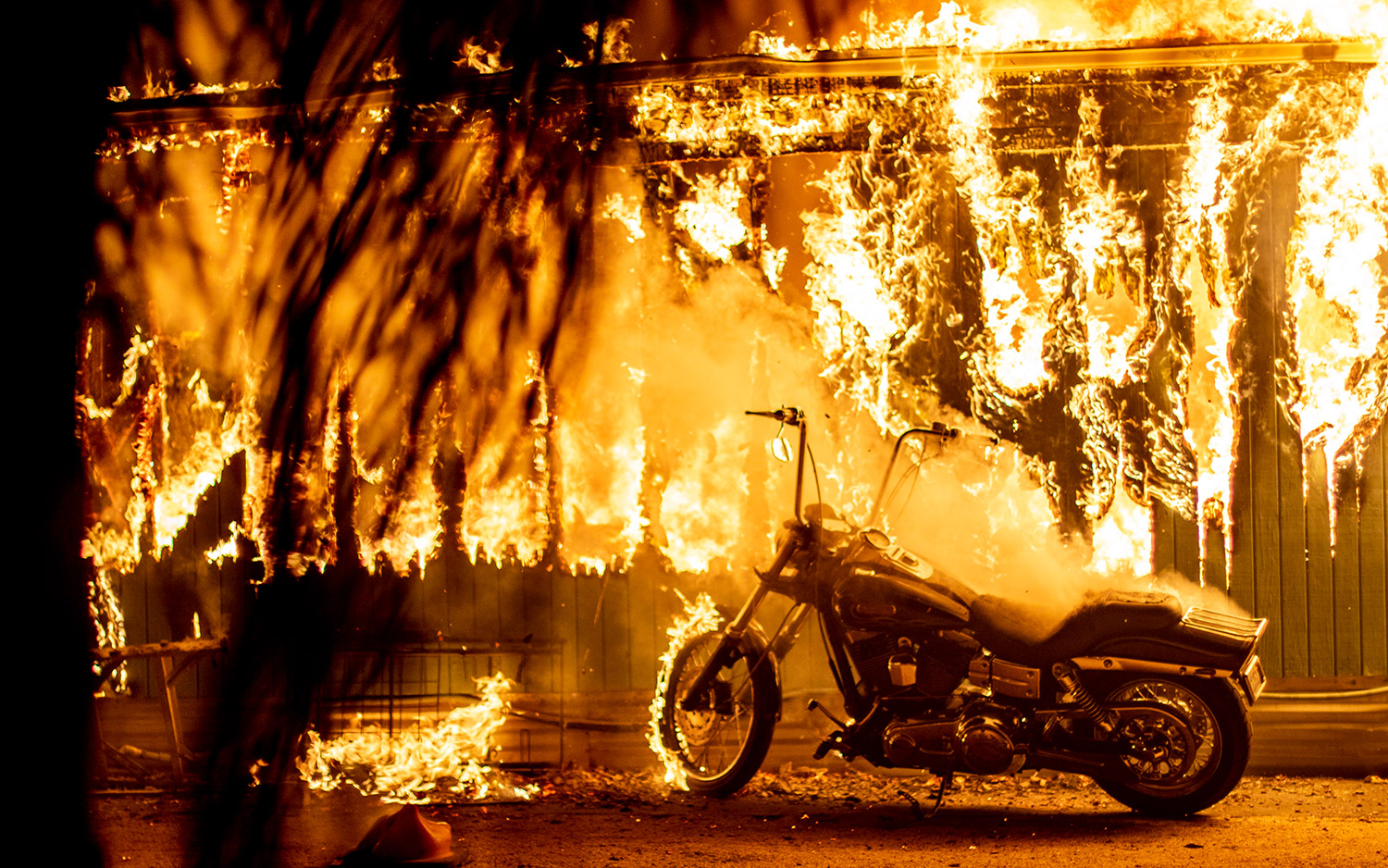
Flames engulf a structure and a motorcycle at an RV park during the Woolsey Fire in Malibu, California, on Nov. 10, 2018. As of Nov. 13, the Woolsey Fire had charred an area the size of Denver, according to the New York Times.
Unbelievable damage

In what looks like a scene in some post-apocalyptic movie, a man stands in the middle of a street at the Seminole Springs mobile home park in Malibu Lake, taking in the destruction wrought by the Woolsey Fire, on Nov. 10, 2018.
Deadliest fire
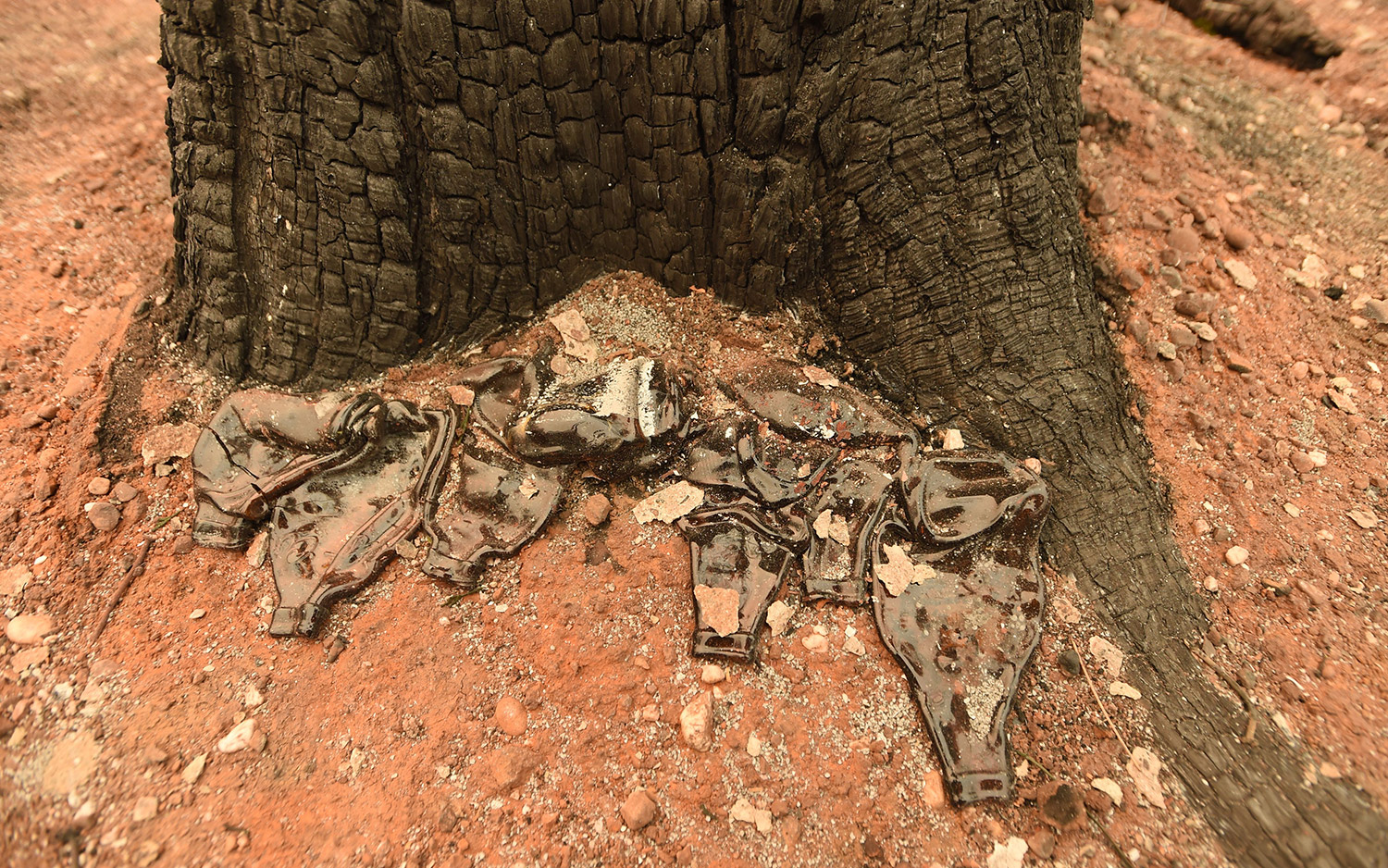
Melted bottles sit at the foot of a burned tree, charred from the Camp Fire that tore through Paradise, California, on Nov. 10, 2018. Deaths from the Camp Fire have been estimated at 48, as of Nov. 13. That makes it the state's deadliest fire on record, surpassing the Griffith Park Fire of 1933, which killed 29 people, according to the New York Times.
Burning hot
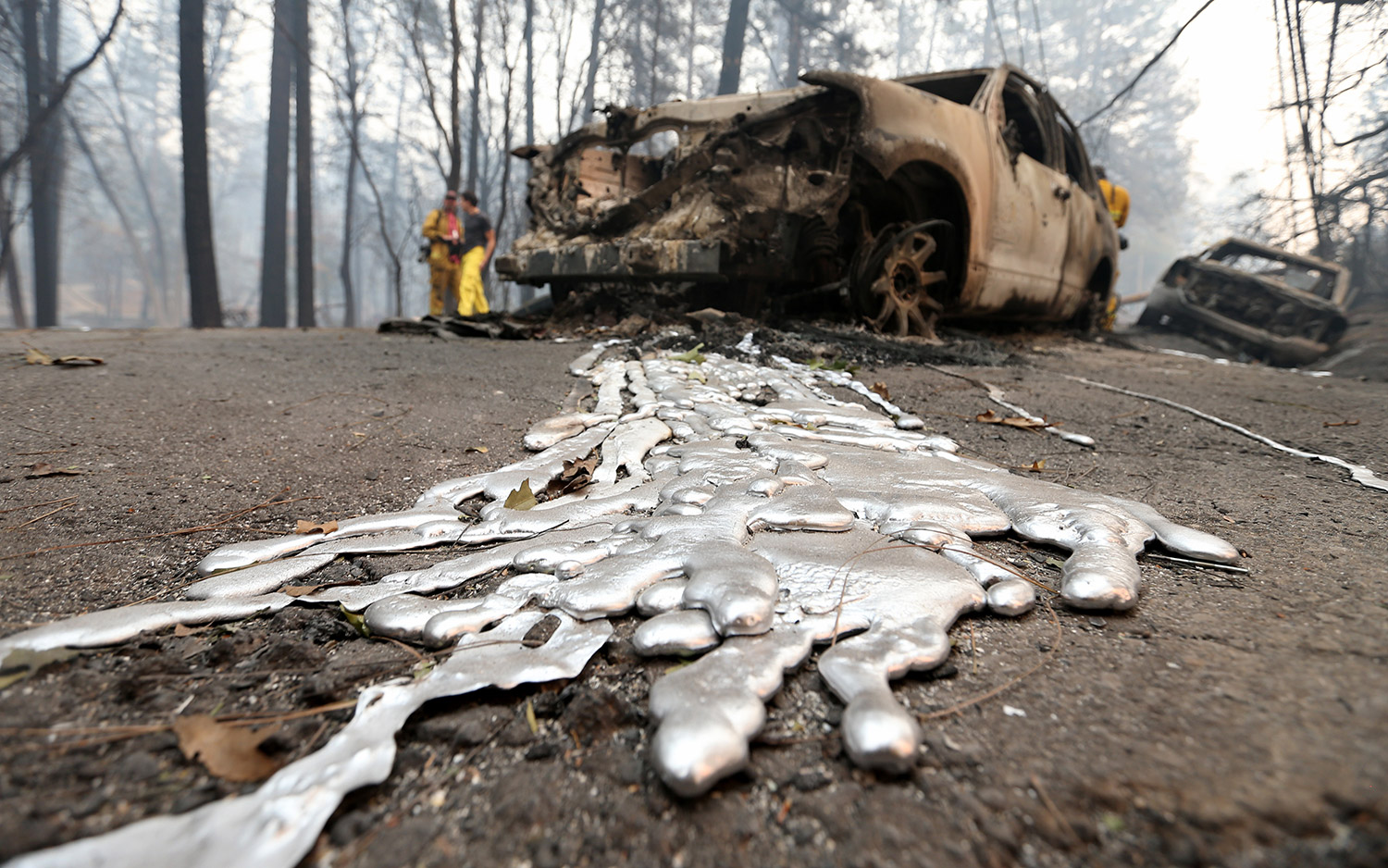
Fires like the Camp Fire can burn hot, hot enough to melt aluminum, whose melting point is 1,221 degrees Fahrenheit (660 degrees Celsius). Burned cars are also shown hereon Pearson Road in Paradise, California, on Nov. 10.
Woolsey destruction
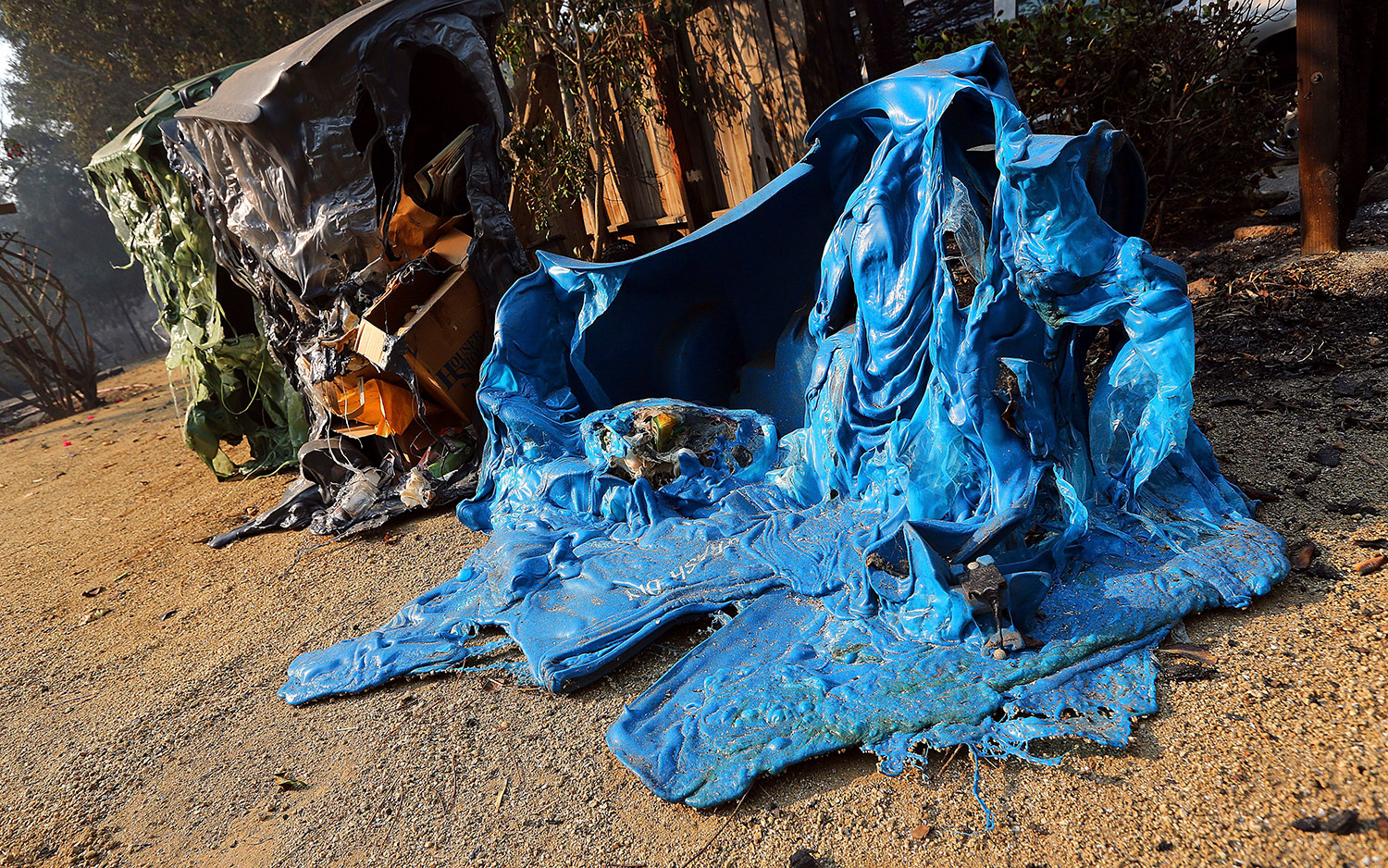
Along Windermere Drive in the Point Dume area of Malibu, melted recycling and trash containers, along with the remnants of at least 20 homes, lay bare the destruction of the Woolsey Fire on Nov. 10.
Scorched from Woolsey
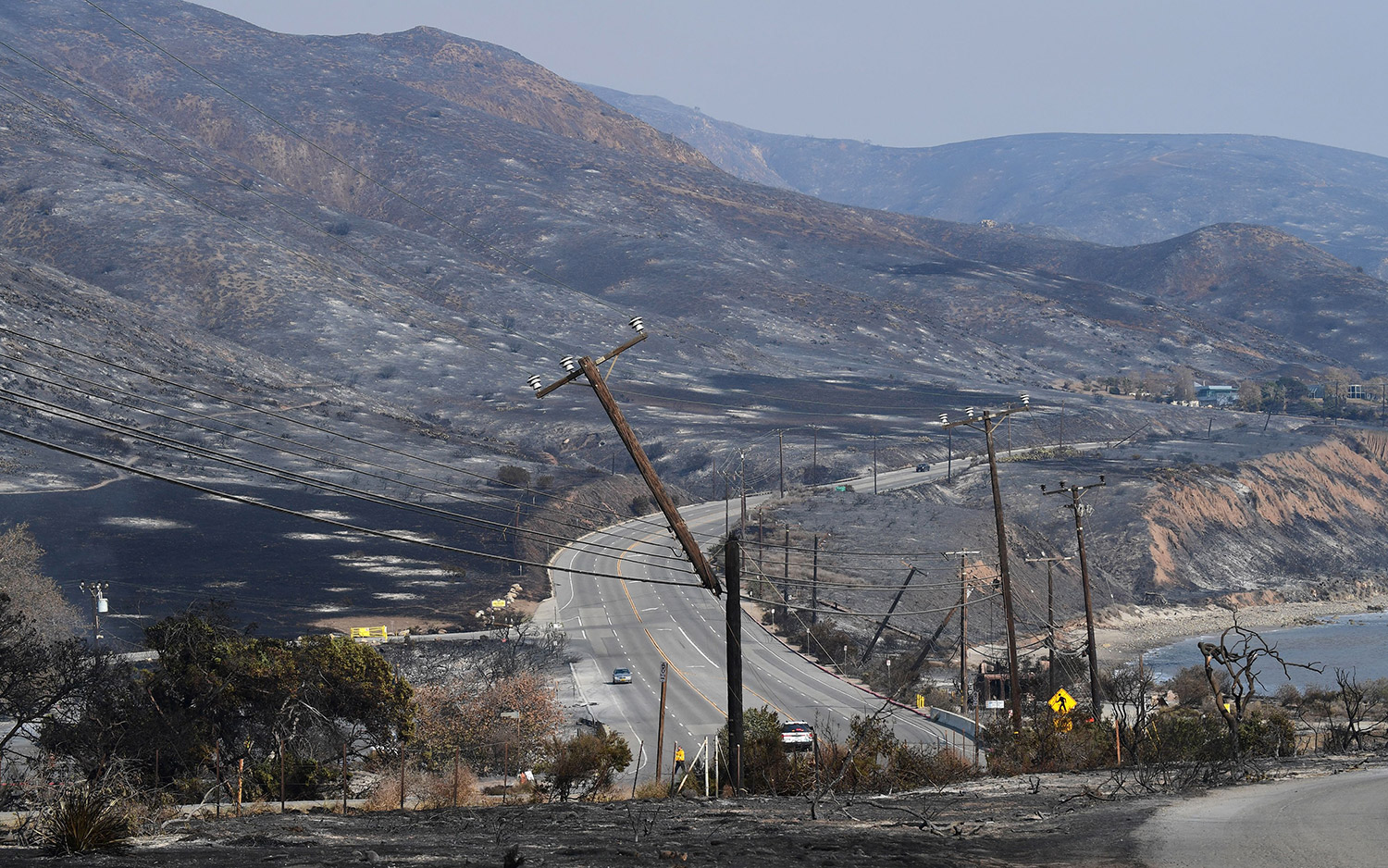
Scorched hillsides and damaged power lines are seen along the Pacific Coast Highway near Leo Carrillo State Beach, November 10, 2018 in Malibu, California, November 10, 2018 after the Woosley Fire tore through the area overnight. - Firefighters in California on November 10 battled raging blazes at both ends of the state that have left at least nine people dead and thousands of homes destroyed, but there was little hope of containing the flames anytime soon. The Ventura County Fire Department said the Scorched hillsides and damaged power lines from the Woolsey Fire can be seen along the Pacific Coast Highway near Malibu's Leo Carrillo State Beach on Nov. 10.
Fire retardant

An air tanker drops fire retardant on flames in Malibu on Nov. 10, 2018. The fire, which started in the Woolsey Canyon near Simi Valley, has been fueled by the Santa Ana winds, according to the Washington Post.
Get the world’s most fascinating discoveries delivered straight to your inbox.
Smoke plume
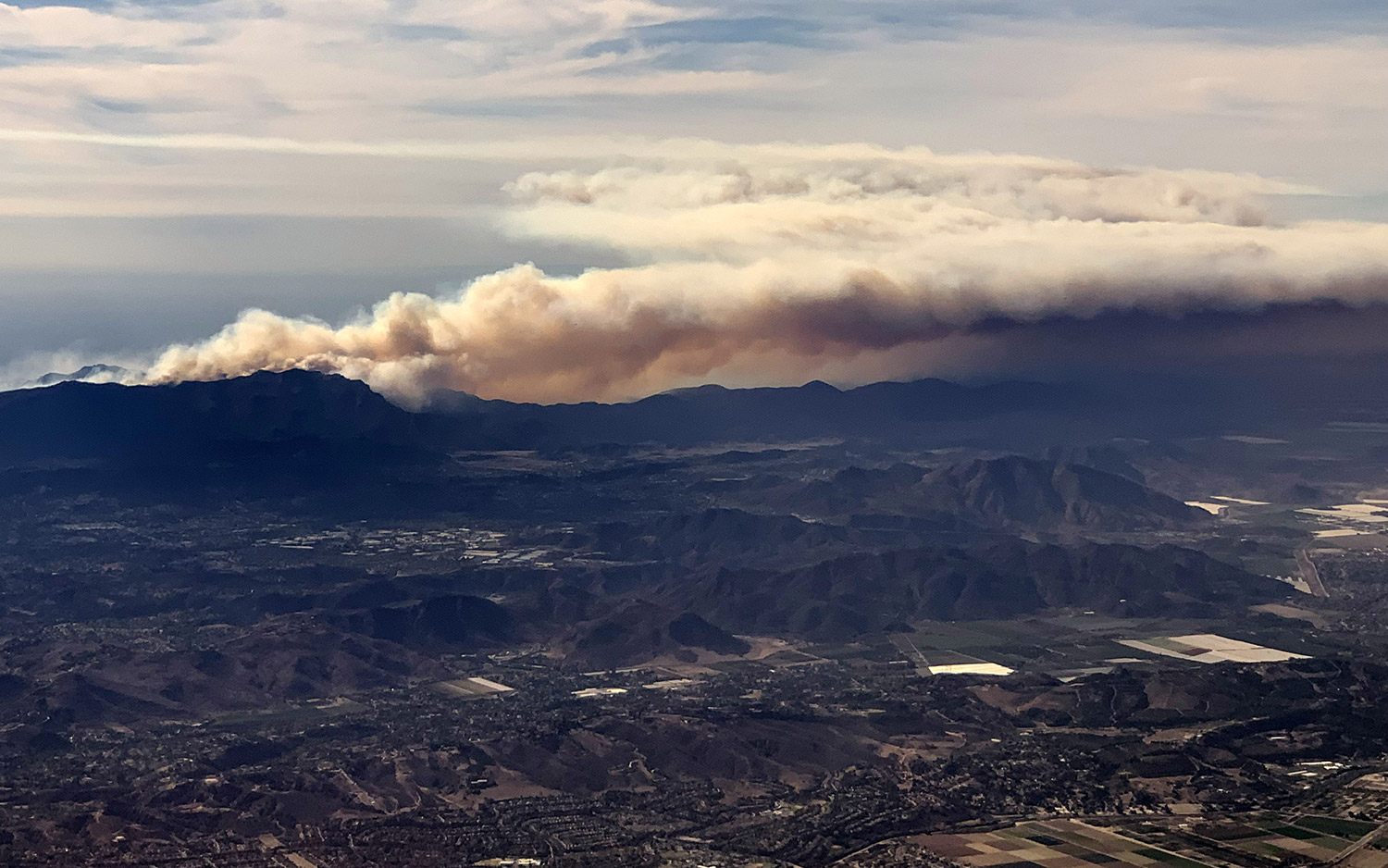
This general overview shows a large wildfire smoke plume from a recent flare-up of the Woolsey Fire near Lake Sherwood, California, on Nov. 13.
Paradise lost

Vintage typewriters remain charred on shelves of a store decimated by the Camp Fire in Paradise, California, on Nov. 13. The Camp Fire north of Sacramento has now killed at least 48 people, injured three firefighters and destroyed 6,500 homes, CalFire said on Nov. 13.
Burned homes
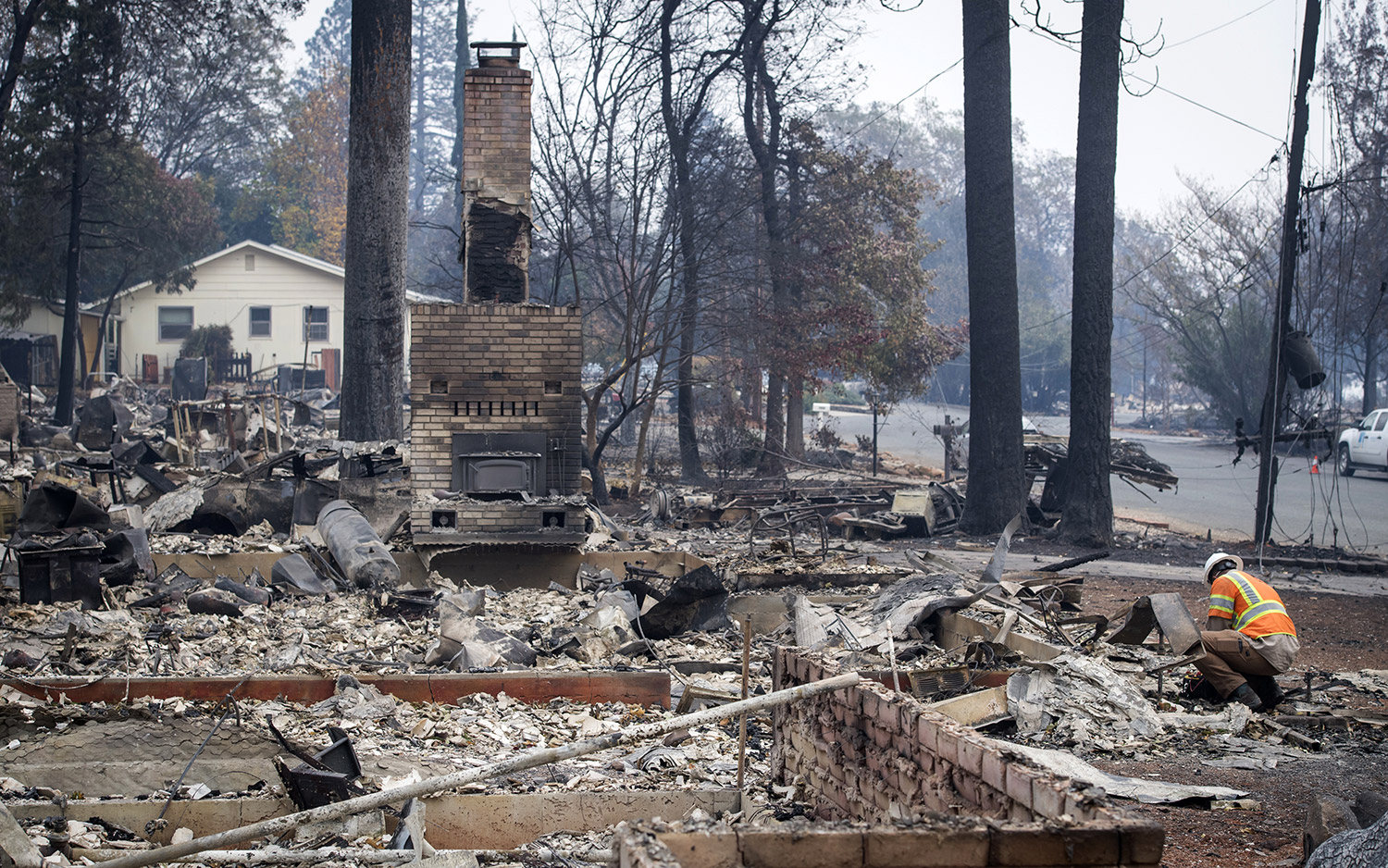
A Pacific Gas and Electric Co. worker locates a gas main line in front of a home destroyed by the Camp Fire in Paradise, California, on Nov. 13. Thousands of homes in the area have been destroyed by the fire.
Jeanna Bryner is managing editor of Scientific American. Previously she was editor in chief of Live Science and, prior to that, an editor at Scholastic's Science World magazine. Bryner has an English degree from Salisbury University, a master's degree in biogeochemistry and environmental sciences from the University of Maryland and a graduate science journalism degree from New York University. She has worked as a biologist in Florida, where she monitored wetlands and did field surveys for endangered species, including the gorgeous Florida Scrub Jay. She also received an ocean sciences journalism fellowship from the Woods Hole Oceanographic Institution. She is a firm believer that science is for everyone and that just about everything can be viewed through the lens of science.


